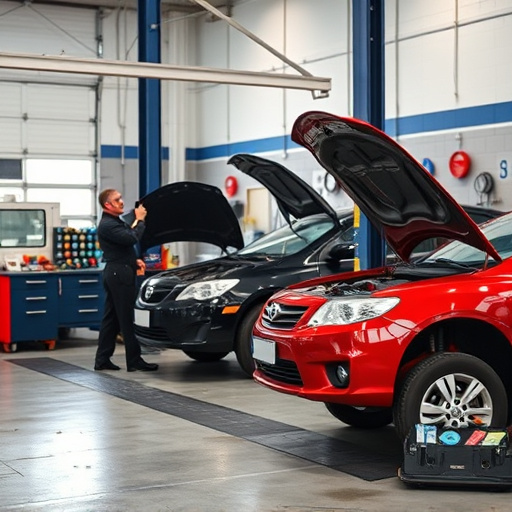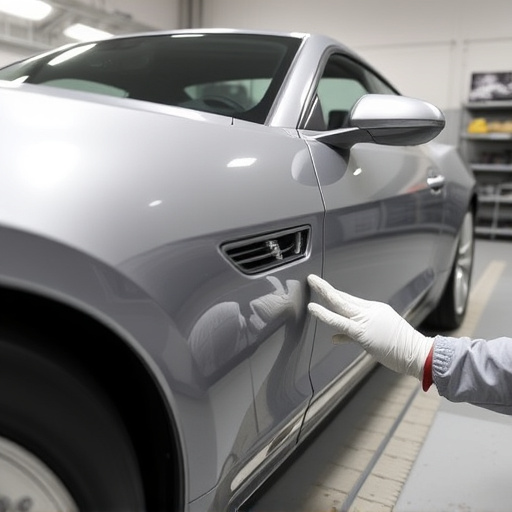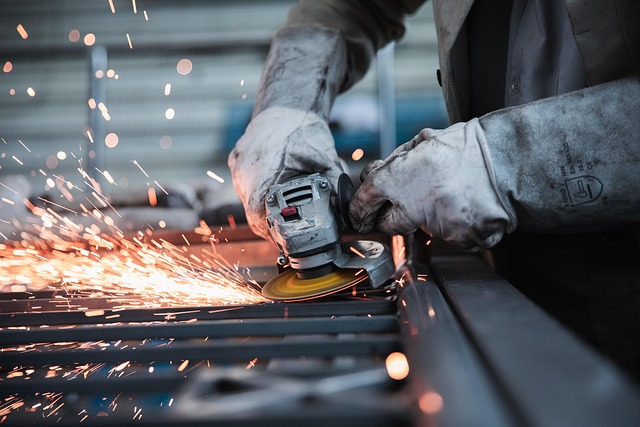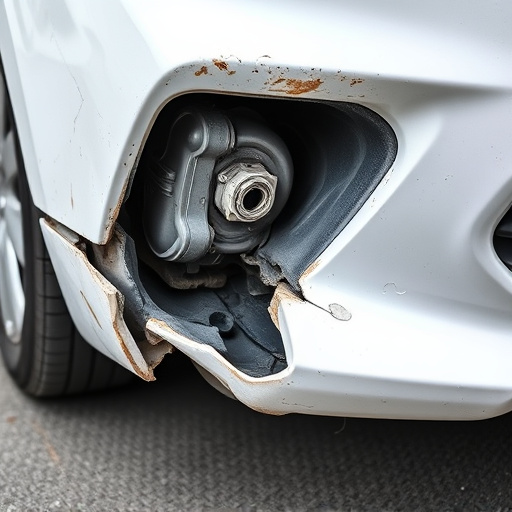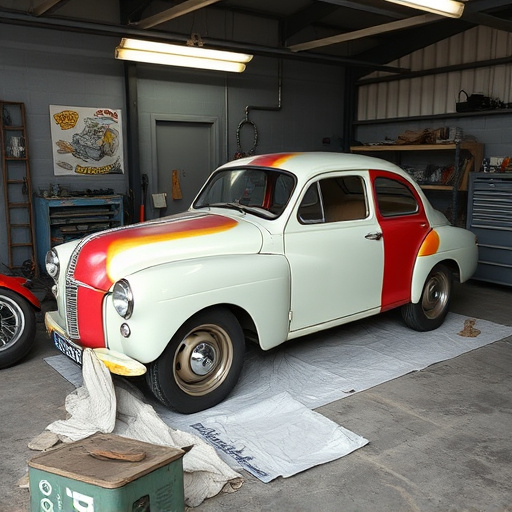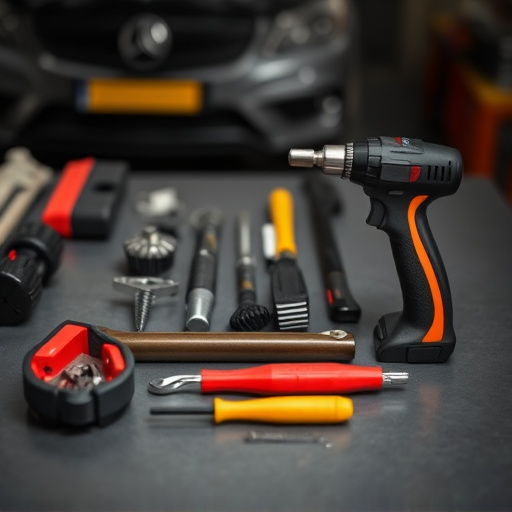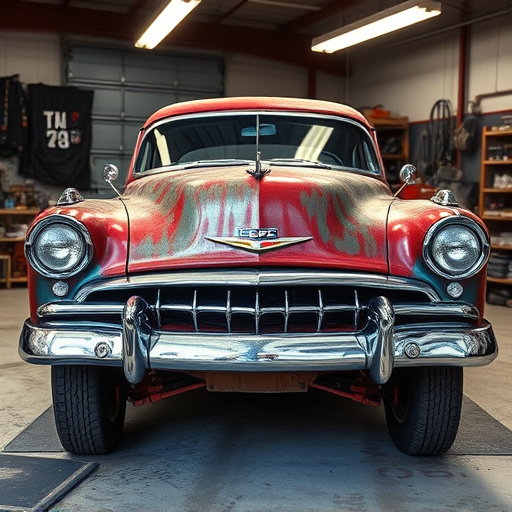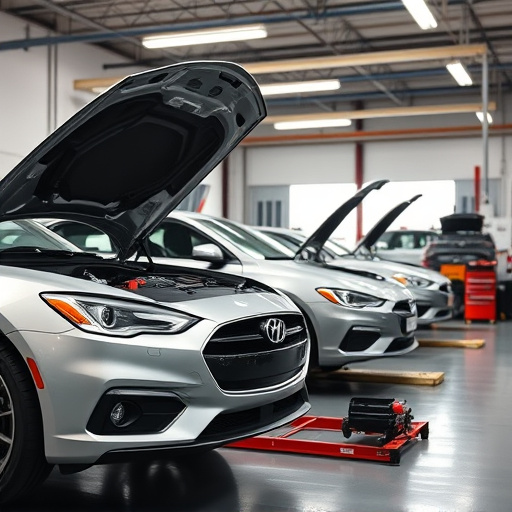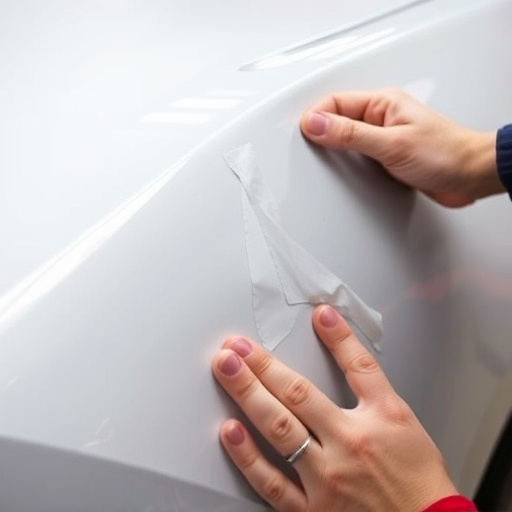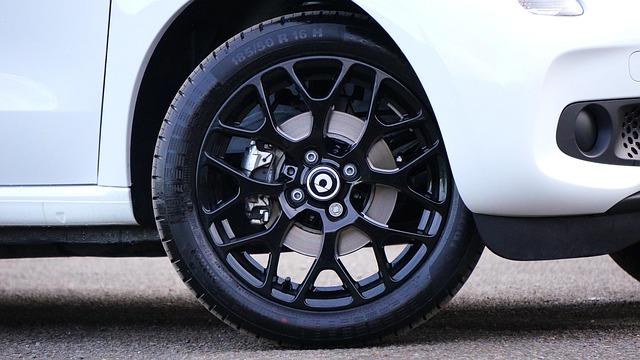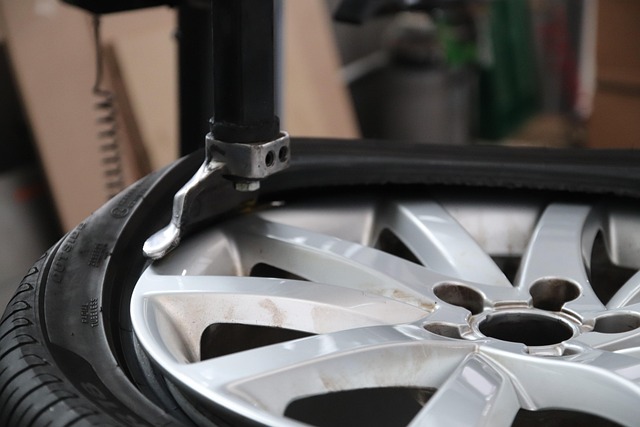Vehicle frame inspection is a critical process ensuring car safety and reliability by detecting structural issues like accident damage, corrosion, or manufacturing defects using advanced technologies. Regular inspections by qualified technicians are essential for owners and fleet managers to prevent costly repairs, meet safety standards, and enhance road safety. Early detection through thorough checks saves costs, ensures structural integrity, and protects against unexpected breakdowns.
Vehicle frame inspection is a critical safety measure often overlooked. It involves meticulously examining the structural integrity of a car’s frame, identifying potential weaknesses or damage that could compromise its strength. By understanding the basics and recognizing its role in accident prevention, drivers can ensure their vehicles remain safe and reliable. Regular checks not only enhance longevity but also provide peace of mind on the road.
- Understanding Vehicle Frame Inspection Basics
- The Role of Frame Inspection in Preventing Accidents
- How Regular Checks Ensure Longevity and Safety
Understanding Vehicle Frame Inspection Basics
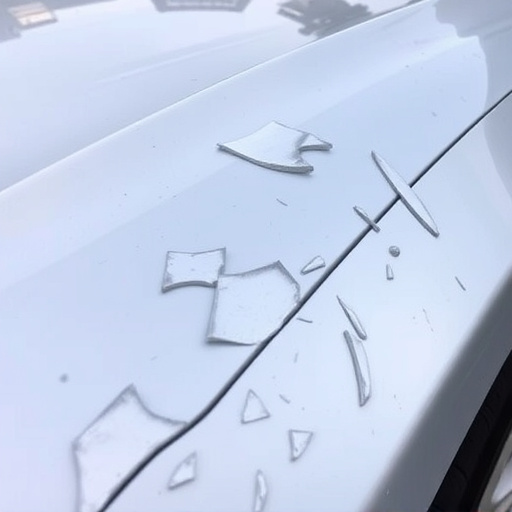
Vehicle frame inspection is a critical process that forms the backbone of any thorough vehicle health assessment. It involves meticulously examining the structural integrity of a car’s frame, which acts as its skeleton, ensuring it can withstand the rigors of everyday driving and unexpected incidents. This inspection goes beyond visual checks; it utilizes advanced technologies like laser scanning to measure and map the frame’s dimensions, identifying even the smallest deformities or misalignments. Such defects could be signs of previous accidents, corrosion, or manufacturing imperfections that compromise safety.
Understanding the basics of vehicle frame inspection is crucial for both car owners and fleet managers. For individuals, it means recognizing that a simple visual check might not suffice; a qualified technician with access to specialized tools is needed to uncover potential issues. For businesses operating fleets of vehicles, like collision repair centers offering fleet repair services, regular frame inspections are not just recommended but essential. By incorporating these checks into maintenance routines, companies can mitigate risks associated with structural failures and ensure their vehicles meet safety standards, thereby reducing the likelihood of costly repairs and, more importantly, enhancing road safety.
The Role of Frame Inspection in Preventing Accidents

Vehicle frame inspection plays a pivotal role in preventing accidents and ensuring road safety. The frame, often referred to as the backbone of a vehicle, undergoes significant stress during collisions and regular wear and tear. A thorough inspection can identify any structural damage or weaknesses that might compromise the integrity of the vehicle. By identifying issues early on, owners and mechanics can take preventive measures, avoiding potential accidents caused by mechanical failures.
Regular frame inspections are crucial for detecting signs of corrosion, misalignments, or previous repair work that was not done properly. Such problems can lead to reduced stability, handling issues, and even catastrophic failure in severe cases. With timely intervention through vehicle frame inspection, owners can opt for necessary repairs, including car body restoration, bumper repair, or vehicle collision repair, thus enhancing overall safety on the road.
How Regular Checks Ensure Longevity and Safety
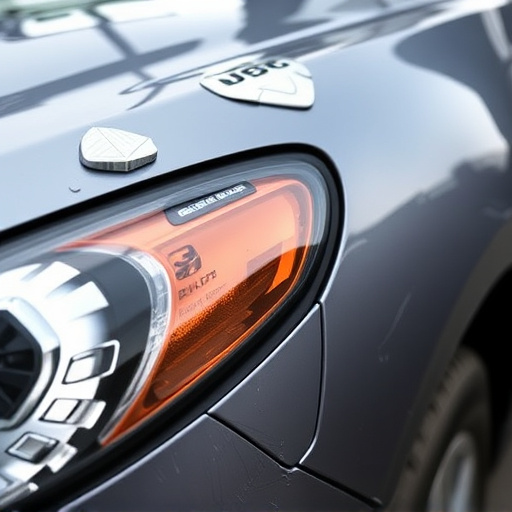
Regular vehicle frame inspections are a cornerstone of maintaining both longevity and safety for your vehicle. These thorough checks identify potential issues that might go unnoticed during routine maintenance, such as subtle bends or cracks in the frame caused by accidents or wear and tear. Early detection allows for prompt action, preventing what could become major problems. This proactive approach not only saves costs but also ensures the structural integrity of your car, which is vital for passenger safety in case of a collision.
Think of it like this: a fender bender or minor accident can leave invisible scars on your vehicle’s frame. Without professional inspection, these might go unaddressed, increasing the risk during subsequent drives. Frame straightening becomes necessary to realign the metal and restore the vehicle to its original safety specifications. Regular inspections act as a shield against unexpected breakdowns, making vehicle repair more manageable and ensuring you’re always on the road safely.
Vehicle frame inspection is not just a recommendation, but an indispensable safety measure. By understanding the basics and adhering to regular checks, drivers can significantly reduce accident risks and ensure their vehicles’ structural integrity. Investing time in this critical process translates to enhanced longevity and safety on the road, making it an essential part of vehicle ownership.
